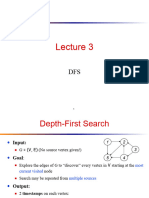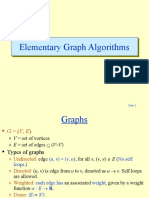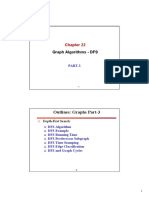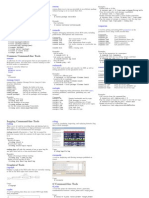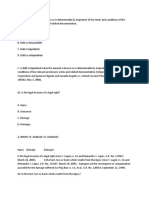0% found this document useful (0 votes)
130 views43 pagesGraph Algorithms & Search Techniques
The document summarizes concepts related to graph algorithms including representations of graphs using adjacency matrices, breadth-first search (BFS), and depth-first search (DFS). It provides pseudocode for BFS and DFS algorithms and examples of running BFS on a sample graph. Key points covered include running time analysis of BFS as O(V+E), properties of BFS such as calculating shortest path distances, and using vertex colors to guide BFS and DFS traversal.
Uploaded by
poojaCopyright
© © All Rights Reserved
We take content rights seriously. If you suspect this is your content, claim it here.
Available Formats
Download as PDF, TXT or read online on Scribd
0% found this document useful (0 votes)
130 views43 pagesGraph Algorithms & Search Techniques
The document summarizes concepts related to graph algorithms including representations of graphs using adjacency matrices, breadth-first search (BFS), and depth-first search (DFS). It provides pseudocode for BFS and DFS algorithms and examples of running BFS on a sample graph. Key points covered include running time analysis of BFS as O(V+E), properties of BFS such as calculating shortest path distances, and using vertex colors to guide BFS and DFS traversal.
Uploaded by
poojaCopyright
© © All Rights Reserved
We take content rights seriously. If you suspect this is your content, claim it here.
Available Formats
Download as PDF, TXT or read online on Scribd
/ 43









